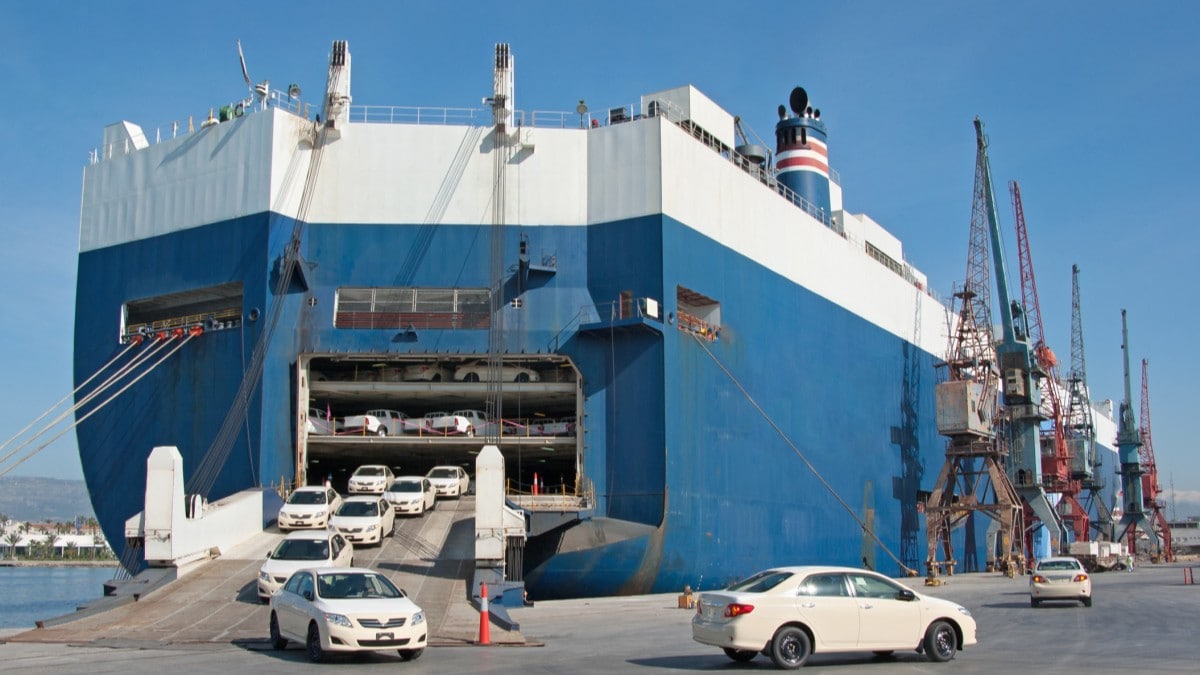New tariffs on car parts began Saturday and are expected to further push up new car prices. The parts tariffs were announced in March as one of three separate rounds of tariffs applying to new cars. But the three rounds were staggered, with this set implemented last.
The White House softened the final round in the last week before enacting it. But analysts still expect the move to push up already-increasing car prices.
CNN reports that the move “could upend the industry, even more than previous levies on imported cars.”
Related: How Each Automaker Is Responding
“Frankly,” the new round of tariffs “looks worse for the broader economy than the tariffs on imported vehicles,” said Jonathan Smoke, chief economist at Kelley Blue Book parent company Cox Automotive.
Three Rounds of Tariffs
A tariff is a tax on imports. The company importing a product into the country pays it. But almost all of them pass it on to shoppers in the form of higher prices.
All of President Trump’s new car tariffs add at least 25% to the cost of affected new cars or parts, and no business at any point in the automotive supply chain has high enough profit margins to absorb a 25% tariff without raising prices.
The first round added 25% to the cost of all aluminum and steel parts entering the U.S. Most auto parts use aluminum or steel, so this affected many car parts. But automakers use as much domestic metal as they can, giving this the lightest effect of the three.
The second added 25% to the cost of every car entering North America. It exempted many cars built in Canada or Mexico, but not those that use 25% or more imported parts.
This third round adds 25% to the cost of most car parts imported from outside North America. Automakers build many cars in the U.S., Mexico, and Canada, but all of them use some imported parts.
How the Latest Tariffs Work
Industry publication Automotive News explains, “The parts tariff applies to a host of powertrain, engine and transmission components, as well as suspension items, driving and steering parts, and safety components.”
Many parts made in Canada and Mexico are exempt under the terms of the U.S.-Canada-Mexico Agreement, a trade pact Trump negotiated during his first term in office.
According to the Office of the U.S. Trade Representative, that could exempt up to 80% of parts. But the exemption may not last. President Trump’s order creating the tariffs carved out the exemption “until the Commerce Department comes up with a mechanism to apply the tariff to the value” of Canadian- and Mexican-sourced parts.
That’s a complex problem because parts are made of parts. Auto parts often cross borders multiple times during assembly. The Commerce Department is working on a formula to explain how it will determine where each part originated.
Automakers Get Some Reimbursement
Under the softening plan announced last week, automakers can apply for reimbursement of a small portion of the tariff – 3.75% of the vehicle’s price. That reimbursement value declines to 2.5% in the second year and disappears in the third.
The plan also prevented “stacking” of the metals tariff – importers will now pay either the metals tariff or the parts tariff, whichever is higher, but not both. However, some analysts believe this exemption applies only to automakers, not parts suppliers. Parts suppliers build most parts.
Added Cost Varies by Vehicle
CNN reports, “But even with that refund, the added cost of tariffs could still come to an average of about $4,000 per vehicle, according to estimates derived from a CNN analysis of government trade data.”
Automotive economic consultancy Anderson Economic Group last week estimated that impacts could vary from $2,000 to over $12,000 depending on model.
This Tariff Will Affect the Car You Already Own
The tariffs active prior to Saturday applied only to new cars. They had begun pushing up the prices of used cars as well, as used car prices tend to rise with new car prices.
But this new round will affect the cars Americans bought years ago. The New York Times explains, “The tariffs on new auto parts are also expected to increase the cost of repairs and insurance premiums, because replacement parts will become more expensive. Rising car prices will contribute to overall inflation, which Mr. Trump had promised to bring down.”
Many Cars Already on Sales Lots are Less Affected
Each automaker has a supply of cars already imported into the country at pre-tariff prices. Those have been disappearing as Americans rush to sales lots to grab pre-tariff prices while they can. But most dealerships aren’t out yet.
Dealers will have to raise prices before, not after, they buy their first post-tariff cars in order to have enough cash on hand to cover the higher costs. But shoppers may still be able to negotiate a lower price now than they could in a month.
Automakers may not simply raise the price of each new car to reflect its tariff cost. Car pricing is a complex calculation. Some may choose to raise prices on one model to pay tariffs on another.
Watch the Kelley Blue Book Fair Purchase Price of any car you’re interested in to understand how tariffs are impacting prices where you live. The Fair Purchase Price reflects actual costs recently paid in your area, making it the best tool to use to predict what you’ll pay.








